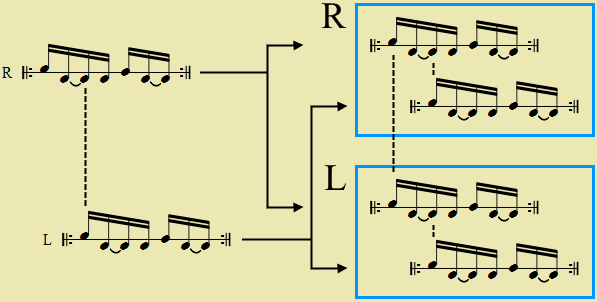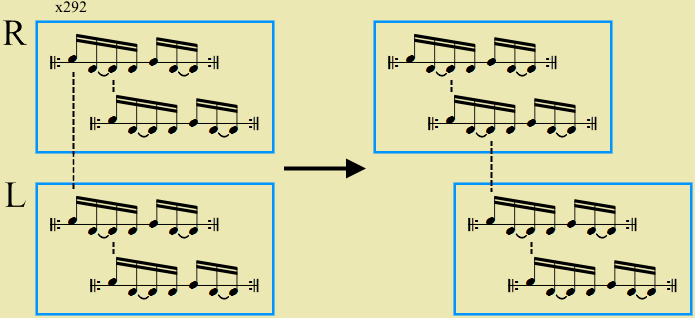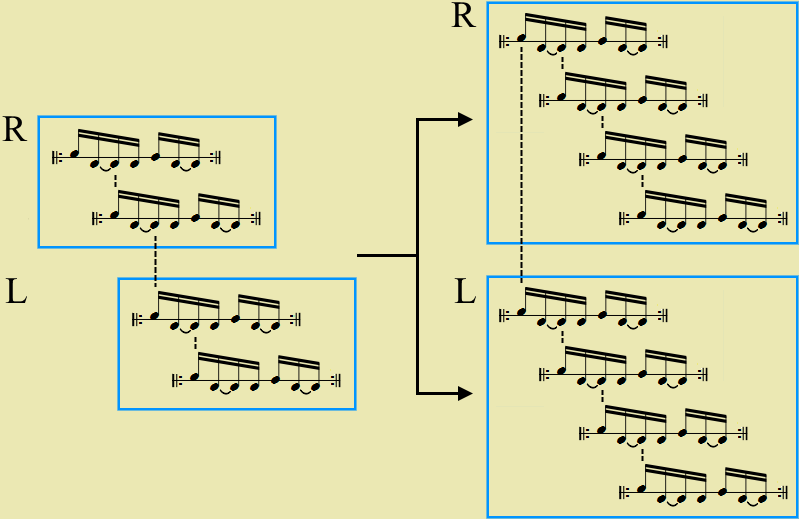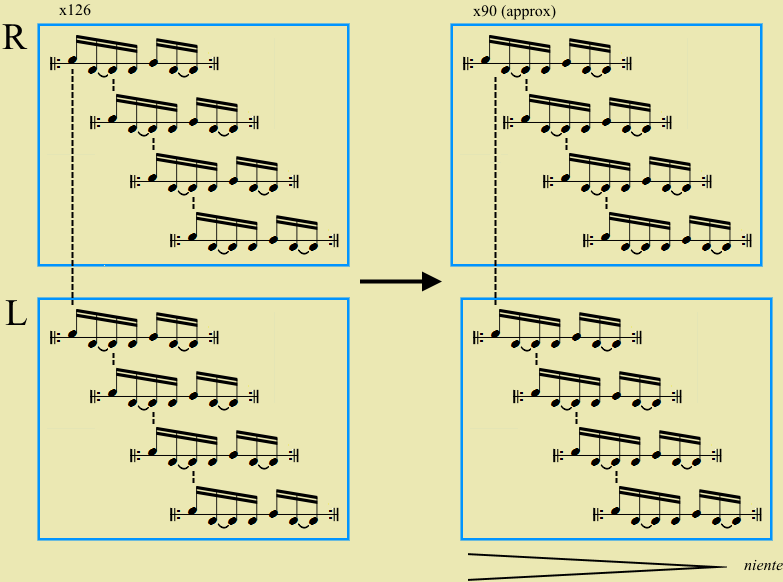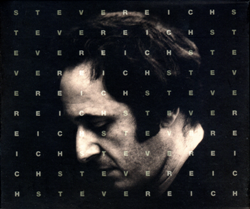
Unorthodox Reich
Classic minimalism
Classic minimalism — as it coalesced in New York under La Monte Young's influence, and as epitomized by the early works of Steve Reich, Terry Riley and Philip Glass — was founded on two key concepts. The first is the droning or short-term repetition that creates the "LP needle stuck in a groove" effect that was so confounding to many people when they first heard it. The second is the idea of form as a result of musical process, a principle that in North America originated with Ives and reached an apogee with the seminal Reich, Riley and Glass compositions of the 1960s and 1970s. Reich's own article from 1968 acknowledges the concept explicitly in its title: Music as a Gradual Process.
The very first piece in this tradition of minimalist process music is usually considered to be Riley's In C, premiered in 1964. It's process is basically a tonal one in which musicians make their way gradually through 53 composed repeating fragments whose modality gradually moves from C major to G minor. With Reich though, the process is always a rhythmic one. This initially took the form of phase shifting, where two otherwise identical lines are allowed to drift out of sync until one is a full beat ahead of its copy (below we'll look closely at a famous example of this, the tape piece Come Out). A different, degenerative type of process is evident in Pendulum Music (1968), where microphones are swung over the loudspeakers to which they're connected, creating feedback pulses that gradually lengthen into sustained high pitches. And then there's Four Organs (1970), unique even for Reich, basically a 20-minute rhythmic elaboration of a single dominant 11th chord. The electric organs referenced in the title start on sharp tutti chords separated by rests, and gradually elongate the chord into sustained notes that get longer and longer before being successively released, leaving only a high A-E at the end. Throughout the work's 20 minute duration a beleaguered maracas player is bidden to maintain a steady eighth note beat. All the other musical parameters are made subservient to the rhythmic process: there are no new pitches introduced, nor changes in timbre or loudness.
It wasn't until after Reich went to Ghana in 1970 to study the drumming tradition of the Ewe people that his most recognizable style took shape: percussion-centric ensembles playing highly contrapuntal modal music built from short, repeated, syncopated phrases. This is the sound world of his most famous works (such as Music for 18 Musicians and Music for Mallet Instruments, Voices and Organ), wherein the predominant musical process is usually the expansion and contraction of musical phrases by successively doubling or halving their length.
Most of these classic works have been analyzed extensively, both because they're
of high quality and because they're relatively
straightforward for analysts, having readily available scores with far fewer
notes in them than a typical Schoenberg or Carter composition. But there's one
important Reich piece from this period that has largely escaped this scrutiny, mainly because it has no score.
And that's the piece we'll turn to next, using the occasion to build our own
transcription.
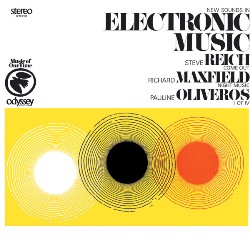
Come Out
Reich's earliest extent pieces are experiments with snippets of speech, recorded on loops of audiotape that are repeated and layered and gradually allowed to shift out of phase. Come Out, from 1966, is the most famous of these, and it's about as elemental as you can get. The sole sound source is the recorded testimony of a young man from Harlem who was a victim of false arrest and police violence. He describes having to make a bruise on his body bleed visibly before the police would take him to the hospital. I'll notate the work as it has been issued on various Nonesuch CDs over the years, a version of the piece that's shorter and higher in pitch (in other words mastered at a faster tape playback speed) than the version on the 1967 Odyssey LP that was the work's first commercial release.
In the "introduction" the following sentence fragment is heard twice (three times in the Odyssey LP):
I had to, like, open up the bruise to let some of the bruise blood come out to show them...
After a pause, a loop of the last five words begins. The way Reich has spliced it, it sounds as though it lasts seven quick beats. It's also easy to hear as being in "C minor" (and Reich acknowledges as much), though in the slower/lower Odyssey version it's closer to B minor. We can plausibly transcribe it as follows:
This loop is repeated over and over in both channels, but soon you'll notice the left channel starting to lag behind the right channel until it becomes an echo. After 136 repetitions (at the 2:48 point) the L channel ends up two beats behind the R channel (technically Reich describes the R channel as moving ahead in time, but to my ears anyway it's easier to perceive the L channel as a straggler):
At this point the texture splits from two to four voices, with both the "in tempo" and lagging voices duplicated in both channels:
Again the L channel starts to lag until it's four beats behind the R channel. This takes 292 repetitions during which the echo turns into a dense canon:
Usually it's in this part of the piece that listeners lose their sensation of hearing English words per se, and instead begin to focus more on the melodic and rhythmic character of the sound. In particular, two features of the texture start to predominate:
- The right-to-left echo of the "sh" sound in "show", which stands out in its high register
- The ongoing drone of C-D-E♭ reinforcing a C minor feeling
After the 292 four-voice reps, at 8:30, the voices split into eight:
The phase shifting continues but is much more subtle. By the end of the piece at 12:45, after about 216 eight-voice loops and a long fade out, the L channel has drifted about an eighth of a second behind the R channel, less than a one beat difference:
At this density the canon has turned into a blur of sound. What began concrete has become abstract, what began as speech has become music. And the quadruple meter effect of the four-voice canon in each channel (entrances on successive "eight note" values in our transcription) now predominates over the off-kilter septuple feel of the original loop, so that the sound stream has become more rhythmically regular.
A couple other details are worth noting:
- The work gets more static as it goes on. Specifically, as the texture gets thicker, the rate of phase shifting gets slower (the number of loops that go by for each "sixteenth note" quantum of phase shift increases). The effect is to maintain a roughly consistent rate of information flow throughout
- If you listen using headphones (which I recommend!), then just as the phase shifting begins,
you'll perceive some interesting movement effects. This is your brain
attempting to interpret the signal arrival lag between your right and left ears. Psychoacoustically the "magic"
threshold is 20‒50 milliseconds within which
the perception of a single directional sound transforms
into the perception of two sounds, one echoing the other. What I
hear, starting at 0:14, is a centralized sound that quickly seems to
pan right as the two-voice phase shifting starts (my brain thinks
the sound is coming from my right side
because it's taking longer to reach my left ear). Around 0:30, I
start to hear the left channel as a distinct sound source echoing the
right channel, and this sensation is clearly
established by 0:45. At the two-to-four voice split at 2:48 I
likewise hear what sounds
like a pan lasting a few seconds, quickly followed by
a sense of two separate sound sources
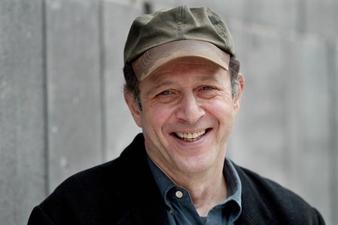
More Orthodox Reich
Come Out was premiered at a benefit concert for the legal defense of the falsely accused African-American youth whose voice it features. That was in 1966, so this year marks the work's 50th anniversary. It still has the edge of a groundbreaking piece that's musically relevant today. More poignantly, recent events have confirmed that the work's underlying political context and messaging also remain relevant today.
As Reich shifted his attention from tape pieces to acoustic instruments, he transferred his interest in phase shifting to works like Piano Phase and Violin Phase and eventually Drumming. And by the end of the 1970s he had relinquished most of the emphasis on process as a governing formal concept, while retaining the repetitive stylistic elements of classic minimalism, thus producing what we now call postminimalism. But he nevertheless returned years later to the idea of melodicizing speech in projects like Different Trains (1988) and Three Tales (1998–2002). Indeed it's this constant exploration and striving to extend the parameters of his work that I think most vividly sets Reich apart from his fellow minimalists.
- September 2016
also see Steve Reich at 80 (external link)
Tweet![]()
Selected writings |
Schellsburg home
Jerry Hunt |
cribbage
![]()
Original Material and HTML Coding Copyright © 2016–20 by
Michael Schell. All Rights Reserved.


